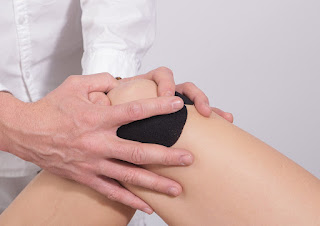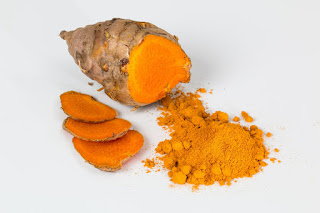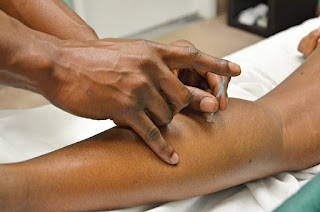Introduction
 |
| Image Credit: pixabay.com |
Knee pain is a common problem that affects people of all ages. It can be caused by various factors, such as injury, arthritis, overuse, and obesity. Knee pain can range from mild discomfort to severe pain that affects your daily activities. Fortunately, several natural ways to reduce knee pain can help you manage your symptoms and improve your quality of life.
1. Exercise
Exercise is a natural way to reduce knee pain by strengthening the muscles around the knee joint, improving joint flexibility, and reducing the risk of future injuries.
Here's a more detailed explanation of how exercise can reduce knee pain:
- Strengthening muscles:
When you exercise, you strengthen the muscles around the knee joint, such as the quadriceps, hamstrings, and glutes. These muscles support the knee joint and help absorb shock when you move. Strengthening these muscles can help reduce knee pain by improving the stability of the knee joint.
- Improving joint flexibility:
Exercise can also improve joint flexibility, which can help reduce knee pain. When your joints are stiff and inflexible, it can strain your knee joint and contribute to pain. However, when you exercise regularly, you increase blood flow to the joint, improving flexibility and reducing pain.
- Reducing the risk of future injuries:
Finally, exercise can help reduce the risk of future knee injuries, which can contribute to knee pain. By strengthening the muscles around the knee joint and improving joint flexibility, you can reduce the strain on your knee joint during daily activities, sports, and exercise. Additionally, exercise can help you maintain a healthy weight, further reducing the pressure on your knee joint and the risk of injury.
Choosing the right type of exercise is essential when you have knee pain. Low-impact exercises such as swimming, cycling, and walking are great options for reducing knee pain. Additionally, exercises that focus on strengthening the muscles around the knee joint, such as leg extensions and squats, can help stabilize the joint and reduce pain. It's also important to start slowly and gradually increasing your exercise routine's intensity and duration to avoid exacerbating your knee pain. If your knee pain persists or worsens with exercise, seeking medical attention to rule out any severe underlying conditions is essential.
2. Weight Management
Weight management can reduce knee pain by reducing the pressure on your knees and reducing the risk of developing knee osteoarthritis.
Here's a more detailed explanation of how weight management can reduce knee pain:
- Reducing pressure on the knees:
Carrying excess weight puts extra pressure on your knee joints, which can contribute to knee pain. Every pound of weight you have can put an additional 4 pounds of pressure on your knees. For example, if you are 10 pounds overweight, it can put an extra 40 pounds of pressure on your knees. This increased pressure can lead to wear and tear on the joint, contributing to pain and inflammation.
- Reducing the risk of knee osteoarthritis:
Osteoarthritis is a common form of arthritis that can affect the knees. It occurs when the cartilage that cushions the knee joint wears away, leading to pain, stiffness, and swelling. Being overweight or obese can increase your risk of developing knee osteoarthritis, as the extra weight puts additional stress on the joint. By losing weight and maintaining a healthy weight, you can reduce your risk of developing knee osteoarthritis and reduce knee pain.
- Reducing inflammation:
Obesity is also associated with chronic low-grade inflammation in the body. This inflammation can contribute to knee pain by increasing inflammation in the joint. By losing weight and maintaining a healthy weight, you can reduce inflammation in your body, which can also help reduce knee pain.
Eating a healthy diet and exercising regularly is essential to manage weight and reducing knee pain. A healthy diet should include a variety of whole foods, such as fruits, vegetables, lean proteins, and whole grains, and limit processed foods and added sugars. Regular exercise can help you burn calories and maintain a healthy weight strengthening the muscles around the knee joint and improving joint flexibility. Low-impact exercises such as swimming, cycling, and walking are great options for reducing knee pain.
Speaking with your doctor before starting any weight loss program is essential, particularly if you have knee pain. They can help you determine a safe and effective weight loss plan appropriate for your needs and medical history.
Read More: How Yoga reduces stress.
3. Hot and Cold Therapy
Applying hot and cold therapy to your knee can help reduce inflammation and relieve pain. Ice packs can be used on the knee for 15-20 minutes, several times daily, to help reduce swelling and inflammation. Additionally, a heating pad or warm compress can be applied to the knee for 20-30 minutes, several times daily, to help improve circulation and reduce pain.
Here's a more detailed explanation of how hot and cold therapy can reduce knee pain:
- Hot Therapy:
Heat can help relax the muscles around the knee joint and increase blood flow to the area, promoting healing and reducing pain. Applying heat to the knee joint can help reduce stiffness, increase the range of motion, and decrease muscle spasms. You can apply heat to the knee joint through a heating pad, hot water bottle, warm towel, or warm bath.
- Cold Therapy:
Cold therapy can help reduce inflammation and pain in the knee joint by constricting blood vessels and reducing blood flow to the area. Cold therapy can also help reduce swelling and numb the site, which can help reduce pain. You can apply cold therapy to the knee joint through an ice pack, a bag of frozen vegetables, or a cold compress.
- Alternating hot and cold therapy:
Alternating between hot and cold therapy can also effectively reduce knee pain. This technique is called contrast therapy and involves alternating between hot and cold therapy for short periods. The heat helps increase blood flow to the area, and the cold helps reduce inflammation. Alternating between hot and cold therapy can help reduce pain, swelling, and stiffness in the knee joint.
It's important to note that hot and cold therapy should be used cautiously and not for more than 20 minutes at a time. Additionally, if you have an injury or medical condition that affects circulation or sensation in the affected area, you should speak with your doctor before using hot and cold therapy.
Hot and cold therapy can be used with other natural methods for reducing knee pain, such as exercise, weight management, and stretching. These methods can work together to relieve knee pain and improve knee function, allowing you to maintain an active and healthy lifestyle.
4. Herbal Remedies
Herbal remedies are natural methods for reducing knee pain used for centuries in traditional medicine. Specific herbal remedies may be effective in reducing knee pain. Turmeric, for example, has anti-inflammatory properties that can help reduce pain and inflammation in the knee joint. Ginger also has anti-inflammatory properties and may help reduce pain and improve mobility. Additionally, omega-3 fatty acids found in fish oil may help reduce inflammation and improve joint health.
Here's a more detailed explanation of how herbal remedies can reduce knee pain:
- Ginger:
Ginger has anti-inflammatory properties and can help reduce pain and stiffness in the knee joint. You can use ginger by adding it to your diet or as a supplement. To add ginger to your diet, you can drink ginger tea or add fresh ginger to your meals. You can also take ginger supplements in the form of capsules or tinctures.
- Turmeric:
 |
| Image Credit: pixabay.com |
Turmeric is a spice that contains curcumin, which has anti-inflammatory properties. Turmeric can help reduce pain and swelling in the knee joint. You can add turmeric to your diet or as a supplement. To add turmeric to your diet, you can drink turmeric tea or add turmeric to your meals. You can also take turmeric supplements in the form of capsules or tinctures.
- Willow Bark:
Willow bark contains a chemical called salicin, which is similar to aspirin. Willow bark can help reduce pain and inflammation in the knee joint. You can use willow bark by taking it as a supplement or by using it topically. To topically use willow bark, you can make a paste by mixing it with water and applying it to the knee joint.
- Boswellia:
Boswellia is an herb that has anti-inflammatory properties and can help reduce pain and swelling in the knee joint. You can use boswellia by taking it as a supplement. Boswellia supplements are available in the form of capsules or tinctures.
- Capsaicin:
Capsaicin is a compound found in chili peppers that can help reduce pain by blocking the transmission of pain signals. Capsaicin can be applied topically to the knee joint through creams or ointments.
It's important to note that herbal remedies should be used cautiously and not in place of medical treatment. If you have knee pain, it's essential to speak with your doctor to determine the underlying cause of the pain and develop a treatment plan. Your doctor can also help you determine if herbal remedies are appropriate for your needs and medical history.
5. Acupuncture and Massage Therapy
 |
| Image Credit: pixabay.com |
Acupuncture and massage therapy are alternative therapies that may help reduce knee pain. Acupuncture involves the insertion of thin needles into specific points on the body to stimulate the body's natural healing processes. Massage therapy involves manipulating soft tissue to reduce tension, improve circulation, and relieve pain. Both of these therapies can effectively reduce knee pain and improve mobility.
Acupuncture and massage therapy are natural methods for reducing knee pain that can help promote healing, reduce inflammation, and improve mobility.
Here's a more detailed explanation of how acupuncture and massage therapy can reduce knee pain:
- Acupuncture:
Acupuncture is a traditional Chinese medicine technique that involves inserting thin needles into specific points on the body. Acupuncture can help reduce knee pain by promoting the release of endorphins, which are natural painkillers. Acupuncture can also help improve circulation, reduce inflammation, and promote healing in the knee joint. Acupuncture is often used with other natural methods for reducing knee pain, such as exercise and herbal remedies.
- Massage Therapy:
Massage therapy can help reduce knee pain by improving circulation, reducing muscle tension, and promoting relaxation. Massage therapy can also help reduce inflammation in the knee joint and improve mobility. Different massage techniques can be used depending on the type of knee pain and the individual's needs. For example, a deep-tissue massage can help reduce muscle tension around the knee joint, while a Swedish massage can promote relaxation and improve circulation.
It's important to note that acupuncture and massage therapy should be used cautiously and not in place of medical treatment. If you have knee pain, it's essential to speak with your doctor to determine the underlying cause of the pain and develop a treatment plan. Your doctor can also help determine if acupuncture and massage therapy are appropriate for your needs and medical history.
Conclusion
Knee pain can be debilitating and affect your quality of life. However, several natural ways to reduce knee pain can help you manage your symptoms and improve your mobility. Exercise, weight management, hot and cold therapy, herbal remedies, acupuncture, and massage therapy are all effective ways to reduce knee pain naturally. If your knee pain persists or worsens, seeking medical attention to rule out any severe underlying conditions is essential.

Post a Comment